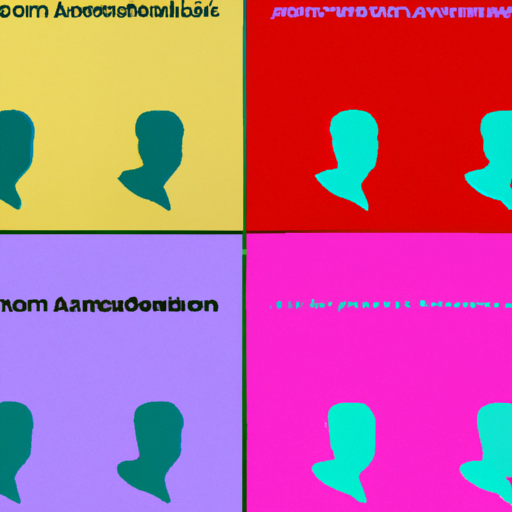Table of Contents
Designing Event Management Interfaces

Event management interfaces play a crucial role in the success of any event. Whether it’s a small gathering or a large-scale conference, a well-designed interface can enhance the overall experience for both event organizers and attendees. In this article, we will explore the key principles and best practices for designing event management interfaces that are intuitive, user-friendly, and efficient.
The Importance of User-Centered Design
When it comes to designing event management interfaces, the user should always be at the center of the design process. Understanding the needs, goals, and pain points of both event organizers and attendees is essential for creating an interface that meets their expectations. User-centered design involves conducting user research, creating user personas, and conducting usability testing to ensure that the interface is intuitive and easy to use.
For example, let’s consider an event management interface for a conference. By conducting user research, we may discover that event organizers need a way to easily manage speaker schedules, track attendee registrations, and communicate with participants. On the other hand, attendees may want a simple registration process, personalized schedules, and real-time updates on session changes. By understanding these user needs, we can design an interface that caters to both groups.
Designing for Efficiency
Efficiency is a key factor in event management interfaces. Event organizers often have tight schedules and limited resources, so it’s important to design interfaces that streamline their tasks and save them time. Here are some best practices for designing efficient event management interfaces:
- Clear and intuitive navigation: The interface should have a clear and logical structure, allowing users to easily find the information or functionality they need. Use familiar navigation patterns and labels to minimize cognitive load.
- Task-oriented workflows: Break down complex tasks into smaller, manageable steps. Provide clear instructions and progress indicators to guide users through the process.
- Automation and integration: Integrate the interface with other event management tools and systems to automate repetitive tasks. For example, automatically syncing attendee data with a CRM system can save organizers time and reduce the risk of errors.
- Smart defaults and presets: Pre-fill forms with default values or offer presets for common settings to speed up the data entry process. This can be particularly useful for event organizers who need to create multiple similar events.
Creating a Seamless User Experience
A seamless user experience is essential for event management interfaces. The interface should be consistent, visually appealing, and responsive across different devices and screen sizes. Here are some tips for creating a seamless user experience:
- Consistent branding: Use consistent branding elements such as colors, typography, and logos throughout the interface. This helps create a sense of familiarity and reinforces the event’s identity.
- Responsive design: Ensure that the interface is responsive and adapts to different screen sizes. This is particularly important as event organizers and attendees may access the interface from various devices, including smartphones and tablets.
- Visual hierarchy: Use visual cues such as color, size, and spacing to create a clear visual hierarchy. This helps users quickly identify important information and navigate through the interface.
- Feedback and validation: Provide real-time feedback and validation to users to confirm that their actions have been successfully completed. For example, display a confirmation message after a registration form has been submitted.
Case Study: Eventbrite
One example of a well-designed event management interface is Eventbrite. Eventbrite is a popular platform that allows event organizers to create, promote, and sell tickets for events. The interface is user-friendly and provides a seamless experience for both event organizers and attendees.
Eventbrite’s interface features a clear and intuitive navigation menu, allowing event organizers to easily access different sections such as event creation, ticket management, and attendee tracking. The interface also provides real-time analytics and reporting, helping organizers track ticket sales and measure the success of their events.
For attendees, Eventbrite offers a simple registration process with personalized event recommendations based on their interests. The interface also provides event details, including location, date, and time, as well as the ability to purchase tickets and receive digital tickets via email.
Key Statistics on Event Management Interfaces
Here are some key statistics that highlight the importance of well-designed event management interfaces:
- According to a survey by EventMB, 91% of event organizers believe that event technology improves the attendee experience.
- A study by Cvent found that 80% of event organizers use event management software to streamline their processes and improve efficiency.
- Research by Eventbrite shows that 75% of millennials attend events to experience something new and unique.
- According to a report by Grand View Research, the global event management software market is expected to reach $11.4 billion by 2027, driven by the increasing demand for efficient event planning and management.
Summary
Designing event management interfaces requires a user-centered approach, focusing on the needs and goals of both event organizers and attendees. By following best practices such as designing for efficiency and creating a seamless user experience, event management interfaces can enhance the overall event experience. Platforms like Eventbrite serve as excellent examples of well-designed interfaces that provide value to both event organizers and attendees. As the event industry continues to grow, the importance of well-designed event management interfaces will only increase, making it essential for designers to stay up-to-date with the latest trends and best practices.


